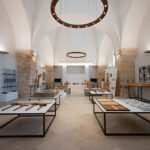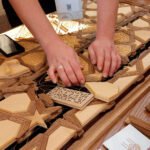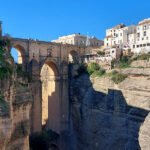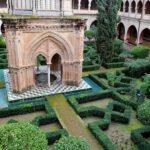
The program was organized by INTBAU and the Rafael Manzano Prize of New Traditional Architecture, with the support of the Lajes do Pico municipality, the Fundación EKABA, the Fundação Serra Henriques and Alireza & Mina Sagharchi, and the collaboration of the Government of Azores through its Department of Culture, Cham Açores, the Universidade Portucalense do Porto (Portugal) and the Instituto Universitário de Lisboa ISCTE-IUL (Portugal), the schools of architecture of the University of Miami and the University of Notre Dame (USA), the Universidad Politécnica de Madrid and the Centro de Investigación de Arquitectura Tradicional (CIAT).


– The place –
Pico’s vernacular architecture, made out of black volcanic stone, lime mortars and wood, is of outstanding beauty




– The work process –




– Intervention proposal –



– Results and exhibition –


– Other activities –
In addition to the field work, experts in the history, geology, biology, landscapes, traditions and architecture of the area were invited to lecture on these topics. All lectures were kindly hosted by the Whaling Museum of Lajes do Pico.

Several teachers and participants of the summer school delivered various workshops on drawing, perspective, watercolor and other painting techniques.

The participants of the summer school had the opportunity to witness how one of the island’s remaining master stonemasons works, an expert in building the dry stone walls that can be found throughout much of the island’s landscape. They were also able to experiment with the traditional tools of the trade.

– The organizing team, faculty and participants –
Lecturers included Raul Azevedo, Manuel da Costa (Museu do Pico), Igor Espínola de França (CHAM Açores), Rui Florentino (Universidade Portucalense do Porto | INTBAU Portugal), Alexandre Gamelas (AGCS Arquitectos | INTBAU Portugal), Mónica Goulart (Parque Natural da Ilha do Pico. Direção Regional do Ambiente), Ramón Mayo (Kalam | Fundação EKABA), Manuel Paulino (Direção Regional do Ambiente e Alterações Climáticas), Telma Ribeiro (Universidade Portucalense do Porto | INTBAU Portugal), José Luís Saldanha (ISCTE Instituto Universitário de Lisboa) e Catarina Santos (AGCS Arquitectos | INTBAU Portugal).
And the participants were Taruna Ramakrishnan Aiyyar (India), Clara Alvariño Galicia (Spain), Patrícia Antunes dos Reis (Portugal), Aiala Bastero Acha (Spain), Alaric Bovero (France), Inês Castro Lobo (Portugal), Pietro Degli Esposti (Italy/Brasil), Emmanuela Dretaki (Greece), Guillermo Escolano Martínez (Spain), Madeline Vogel Fairman (USA), Duarte Fernandez Ruivo (Portugal), Karla Fidalgo (USA), Pierre Keller (France), Alejandro Martínez del Río (Spain), Laura Miguel Pastor (Spain), João Tiago Neto Tereso (Portugal), Daniele Roccaro (Italy), Cesar Eduardo Rojas Marrugo (Colombia), Andrew Seago (USA), Nicholas Sloan (USA), Ashley Straub (USA), Alexis Stypa (USA) and Nathan Walz (USA).








